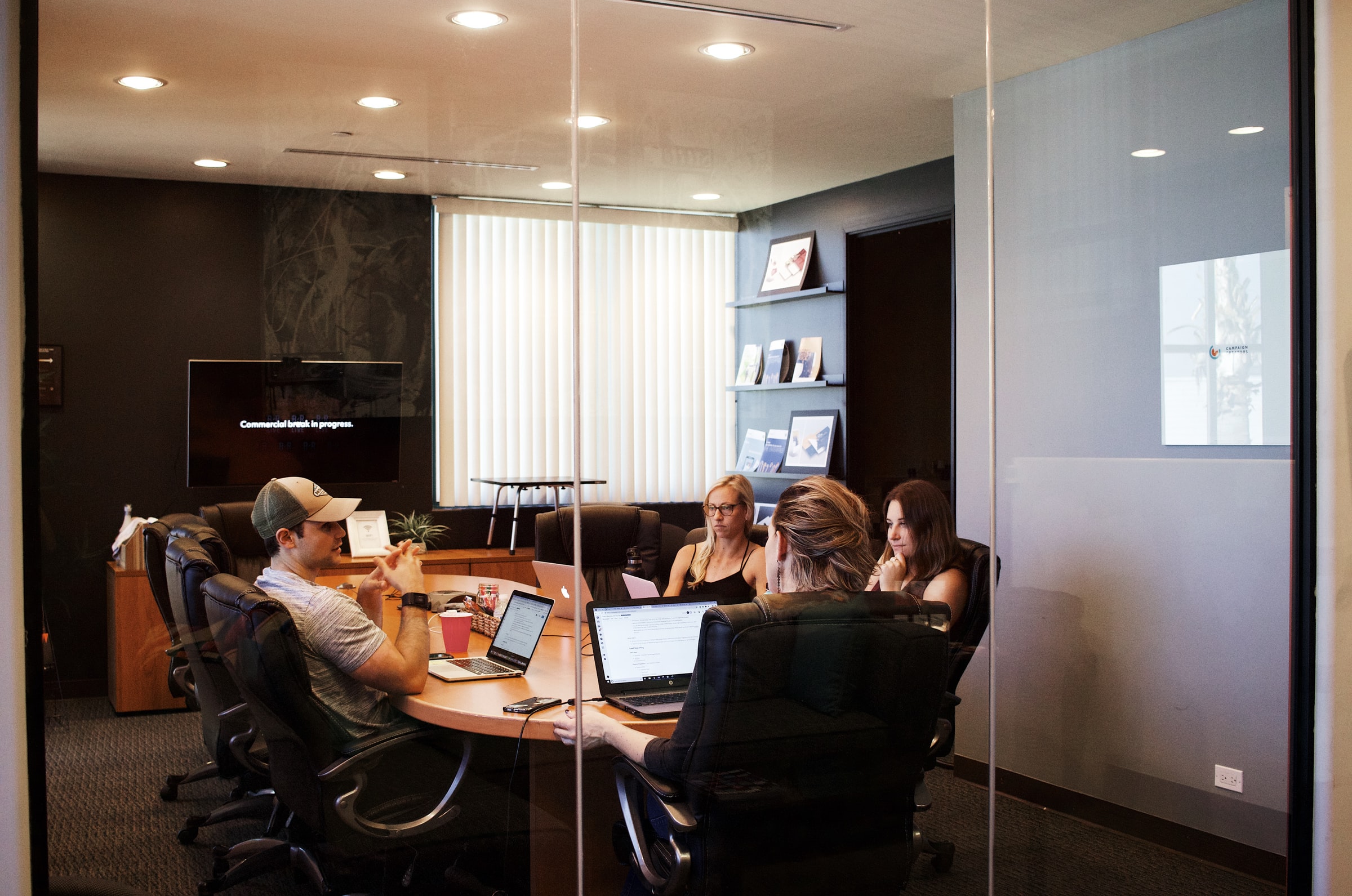
10 Jun Are your meeting rooms facilitating productive hybrid meetings?
It is significantly easier to run a meeting with all attendees either in-person or remote, however hybrid meetings have more complex requirements. This is because it is easy for in-person attendees to become anonymous faces in a meeting room, whilst remote attendees struggle to be included in the discussion. As many businesses made the move to hybrid work some time ago, some have found methods of making hybrid meetings more inclusive, but few have adjusted their physical meeting rooms to facilitate productive hybrid meetings. In this article, we will discuss the intricacies of hybrid meetings, Microsoft’s meeting room solution, and some of the common hybrid meeting room peripherals.
The intricacies of hybrid meetings
When running a hybrid meeting, the most important consideration is inclusivity. It is important to ensure that all attendees have the same experience and attention, regardless of whether they are attending in person, or remotely. For remote attendees, it can be difficult to join in conversations if in-person attendees are having side conversations. Conversely, for in-person attendees, it can be difficult to differentiate voices when multiple remote attendees are speaking at the same time, especially if they do not have their cameras turned on.
Similarly, hybrid meetings may not be inclusive due to the ways that content is shared. A whiteboard is always a welcome addition to any planning meeting, however, if it is a physical whiteboard, it limits participation and collaboration with remote attendees.
What is Microsoft Teams Rooms?
Teams Rooms is Microsoft’s hybrid meeting room solution, designed to ensure all participants have the same productive meeting experience, regardless of where they are physically located. Teams Room is such a powerful solution as it is both a software and hardware solution, with peripherals designed to work with Teams, and functionality within Teams specifically designed for inclusive hybrid meetings. There is a wide variety of Teams Room hardware to ensure that the solution can scale to any size room, from small huddle rooms to full-size conference rooms.
Some of the features unique to Teams Room include methods of joining meetings, such as one touch join, and proximity join. One touch join is a feature that enables attendees to engage the audio and video equipment and join the meeting with a single button on the Teams Room hub. This alleviates the headache of having to set up and troubleshoot equipment before every meeting. Proximity join is a feature that enables impromptu meetings by allowing employees to connect to a Teams Meeting Room using Bluetooth from their phone or device. There are also features within Teams designed for Teams Rooms, such as inclusive video layouts that help physical and remote attendees can maintain eye contact and feel more natural.
Common hybrid meeting room peripherals
Display
A high-quality display is essential for an effective hybrid meeting room, and it should be large enough that if a spreadsheet or document is shared, it will be visible to all physical attendees. Having a dual monitor setup is particularly useful for hybrid meetings as one screen can be used for sharing content, leaving the other screen for the video feed from virtual attendees. With the inclusive video layouts available in Teams, the remote attendees can be placed in a row along the bottom on both screens, making them in eye line with the physical attendees.
Camera
There are many different camera solutions for hybrid meeting rooms. The most effective solution is a wide-angle camera fitted above or below the display screens to capture the entire room, along with a secondary smart camera that tracks the current speaker. This configuration ensures that remote attendees can see all the physical attendees, whilst also easily being able to see who is speaking.
Microphone/Speakers
There are two key configurations for microphone placement in a hybrid meeting room, either ceiling mounted or tabletop microphones. Ceiling-mounted microphones are more discrete; however, they are unable to be muted by area, which is possible with a configuration including multiple tabletop microphones. When deciding on a microphone setup, it is important to consult a specialist as no two rooms are the same.
Similarly, there are many options for speakers and speaker configurations. When deciding on a speaker solution, it is important that it matches the size of the room, with considerations for acoustics to prevent feedback and poor audio quality.
Hub/Controller
Whilst remote meetings can be started by wirelessly connecting a laptop to the display screen, Teams Rooms can also have a hub or controller that can be used to start and end meetings, enable easier content sharing and control the A/V equipment. This peripheral facilitates productive hybrid meetings as it significantly reduces the amount of time required to set up the room and allows for better camera control.
Whiteboard
There are many whiteboard solutions that can be used for hybrid meetings, including software whiteboards and digital whiteboards. However, with Microsoft Teams, it is possible to write on a standard whiteboard with a camera facing it and Teams will automatically correct any parallax distortion, so all attendees get a focused, clear view of the whiteboard.
How to get started
Every business has unique requirements for their hybrid meeting rooms, with different peripherals being used for each. Thankfully, Teams Room is a flexible enough solution to enable this, with many devices specifically designed for Teams integrations. If you want to improve your hybrid meeting experience or implement better meeting rooms in your business, contact us today.
 Remote Support
Remote Support

